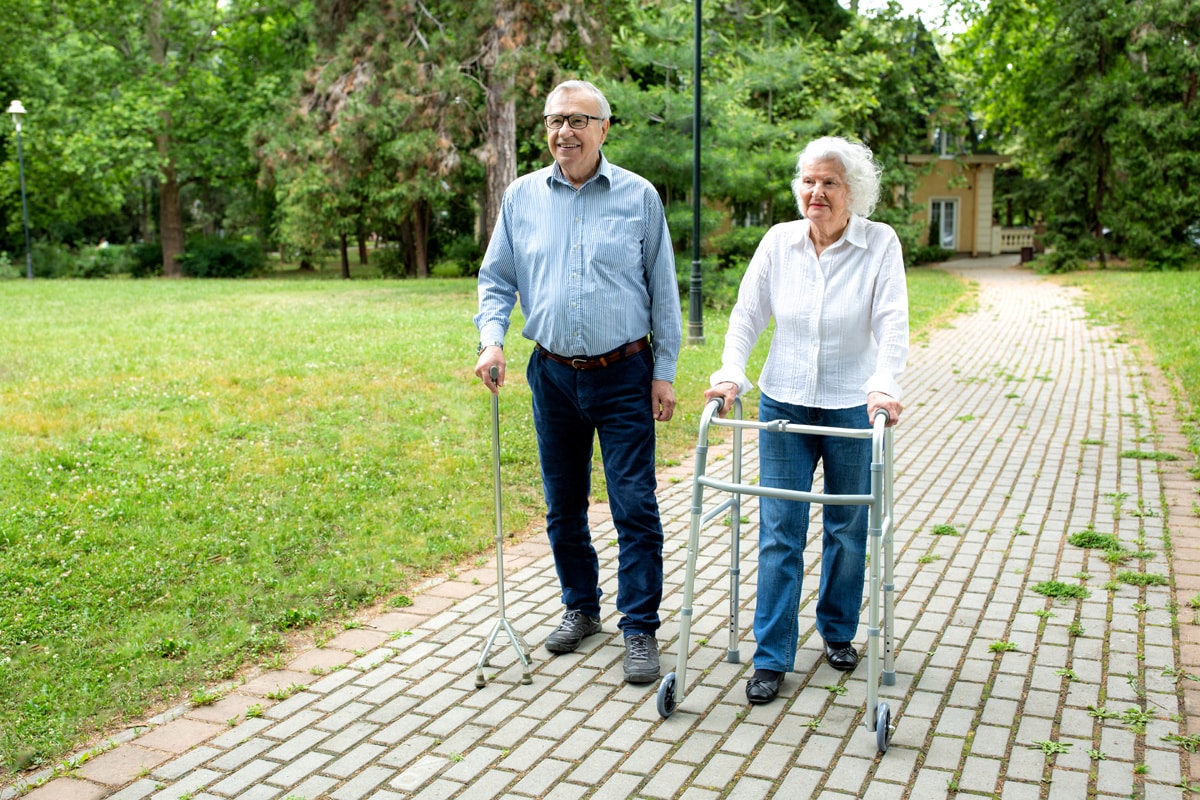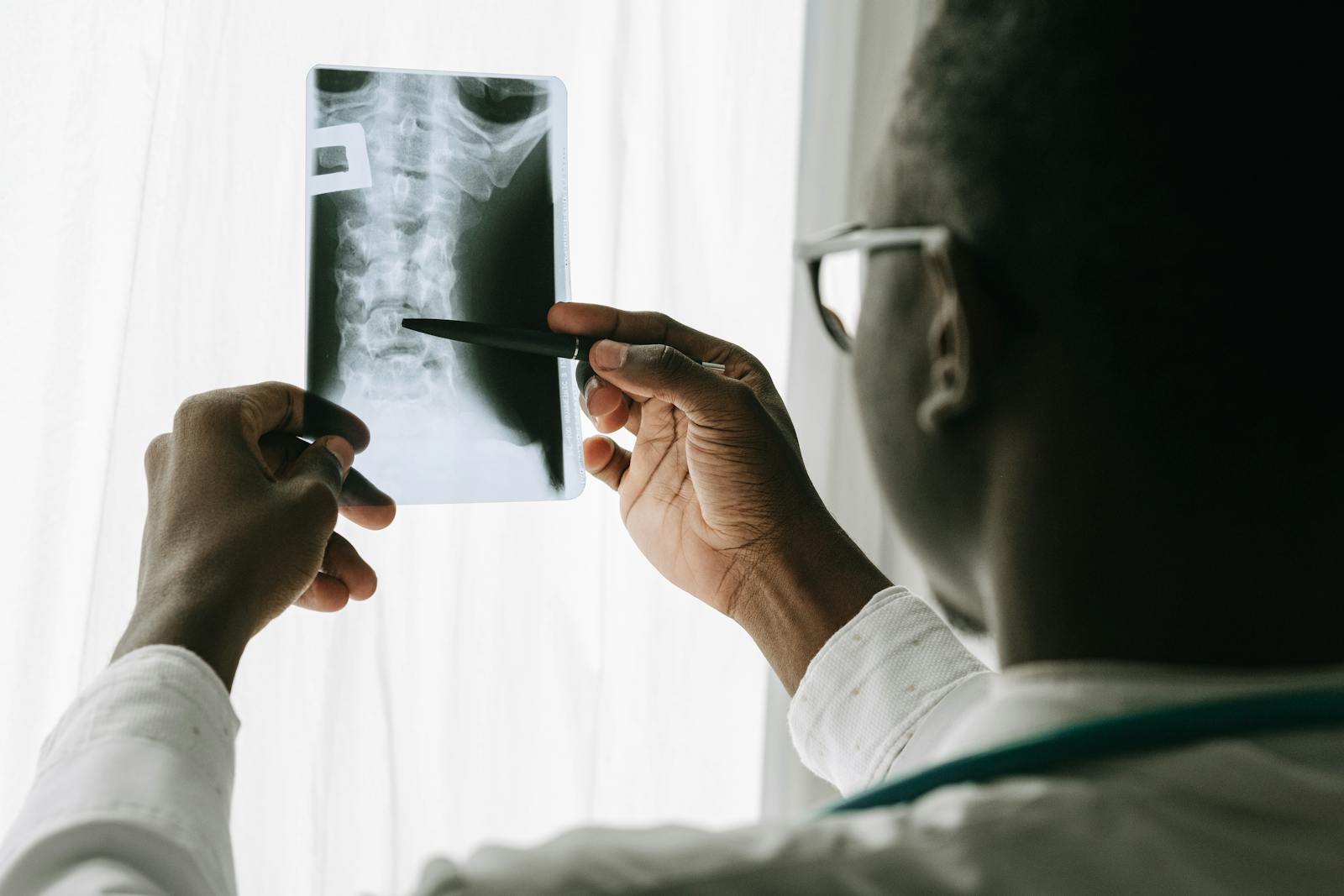Microdiscectomy, a surgical procedure commonly used to treat severe disc herniation, often leaves patients wondering about the appropriate level of physical activity during recovery. One recurrent concern is the potential risk associated with excessive walking post-operatively. While it is widely accepted that maintaining a certain degree of mobility is beneficial for recovery, the question remains: how much is too much? Overstepping this boundary might lead to complications, such as increased pain and possible infection. This intriguing dilemma warrants a more in-depth exploration to strike the perfect balance between rest and physical activity in the post-operative phase.
Understanding Microdiscectomy
Exploring the domain of spinal surgeries, microdiscectomy emerges as a vital minimally invasive procedure designed to alleviate pain caused by herniated discs pressing on nerve roots. Regarded as a gold standard in the surgical treatment of herniated lumbar discs, this procedure involves the removal of a small portion of the bone over the nerve root or disc material under the nerve root to relieve neural impingement and provide more room for the nerve to heal.
The surgical procedure details start with the surgeon making a small incision in the midline of the back. Using special instruments, the surgeon removes a portion of the bone and the ligament that compresses the nerve. The nerve root is then gently moved away to remove the disc material. The whole procedure typically takes about one to two hours.
Alternative treatments to microdiscectomy include conservative methods such as physical therapy, pain medication, and corticosteroid injections. However, if these treatments fail to alleviate the symptoms or if the condition worsens, microdiscectomy is often recommended. It’s important to understand that while microdiscectomy is a common procedure, like all surgeries, it carries certain risks and potential complications. Therefore, it should be considered carefully and in consultation with a medical professional.
The Importance of Post-Op Recovery
The post-operative recovery period following a microdiscectomy is critical to the patient’s overall outcome and long-term spinal health. This phase encompasses understanding the recovery process, recognizing the potential risks associated with overexertion, and implementing appropriate care strategies. A meticulous approach towards these aspects can facilitate a smooth recovery and help avoid any complications or setbacks.
Understanding Microdiscectomy Recovery
How important is post-operative recovery following a microdiscectomy, you might ask? The answer is: crucial. Adequate recovery is essential to prevent complications and guarantee ideal surgical outcomes. While microdiscectomy alternatives exist, this minimally invasive procedure is often the most preferable option for patients with disc herniation. The recovery process involves not only physical rest and gradual resumption of activities, but also a strategic focus on post-surgery nutrition. A nutrient-dense diet can accelerate healing, reduce inflammation, and bolster the immune system. Hence, understanding microdiscectomy recovery is pivotal. It requires adherence to medical advice, patience for gradual progress, and a conscious effort in maintaining a wholesome diet. Therefore, the process is multifaceted, underscoring the importance of a comprehensive recovery plan.
Risks of Overexertion
While understanding the recovery process is undeniably important, it is equally vital to acknowledge the potential hazards of overexertion post-surgery. Overexertion symptoms can vary from fatigue and discomfort to more severe ones like unusual pain or swelling. These symptoms might suggest an underlying issue, potentially indicating a deviation from the normal course of recovery. Ignoring these signs can lead to recovery setbacks, delaying the healing process and increasing the risk of complications. Overexertion can strain the surgical site, causing inflammation and increasing the potential for re-herniation. This can escalate into a vicious cycle of pain and disability, impeding the patient’s return to normal function. Therefore, maintaining a balance between necessary movement and rest during the recovery phase is imperative.
Post-Op Care Tips
In the journey towards full recovery, adhering to post-operative care tips plays a pivotal role in ensuring excellent healing, reducing the risk of complications, and facilitating a successful return to normal function after a microdiscectomy. Pain management is an essential aspect of post-op care; it is important to follow the prescribed regimen, not just for comfort but also to encourage mobility and prevent chronic pain development. Equally important is sleep importance, sleep being the body’s natural way of healing and replenishing. It fosters better physical health, improves mood, and enhances overall recovery. Inadequate sleep may slow down the healing process or lead to complications. Hence, prioritizing post-operative care, including pain management and adequate rest, is critical for a successful recovery.
Risks of Excessive Walking Post-Surgery
In addition, moderate walking post-microdiscectomy can aid recovery, but there is a potential risk associated with excessive walking following this surgical intervention. Overexertion can lead to increased post-surgery complications, including heightened pain, inflammation, and potential damage to the surgical site. Moreover, it may negatively impact the healing process, potentially prolonging recovery time and increasing the likelihood of further medical intervention.
Increased Post-Surgery Complications
Despite the benefits of walking after a microdiscectomy, excessive ambulation may lead to increased post-operative complications. Overexertion can exacerbate complication symptoms such as increased pain, swelling, or even bleeding at the surgical site. In some instances, it may also lead to the development of seromas or hematoma, fluid or blood-filled pouches, respectively.
Furthermore, constant movement can disrupt the surgical wound, potentially introducing external pathogens into the site and obstructing infection prevention efforts. This raises the risk of superficial or deep surgical site infections, which can extend the patient’s recovery period or even necessitate further intervention. While post-operative walking is encouraged for recovery, it must be balanced to avoid these heightened risks. It is essential to follow medical advice regarding post-surgery ambulation.
Impact on Healing Process
Excessive ambulation post-microdiscectomy can potentially disrupt the delicate healing process, posing risks that stem from overexertion and the potential for wound disruption. Overexertion and physical stress can also impede necessary healing nutrition, essential for wound recovery and tissue repair. Overactivity may lead to malnourishment, as it increases metabolic demand without a corresponding increase in nutrient intake. Subsequently, this imbalance may slow down the recovery process, contributing to longer healing times and an elevated risk of wound complications. Additionally, overexertion challenges emotional wellbeing, as it may lead to fatigue, frustration and increased pain, further impeding healing. Therefore, maintaining a balance between adequate rest and gentle activity is important to support both physical and emotional recovery after microdiscectomy.
Pacing Your Recovery Process
In the postoperative journey following a microdiscectomy, it is important to carefully pace your recovery process to guarantee gradual and consistent progress in regaining mobility. This involves a strategic balance of resting and doing moderate physical activities that do not strain the healing spine. Also, a well-planned recovery diet and priority on mental wellness are pivotal elements of the process.
- Recovery diet: It is imperative to maintain a balanced diet rich in proteins, vitamins, and minerals to aid in the healing process. Nutrients such as Vitamin C and Zinc are particularly beneficial for wound healing and tissue repair.
- Mental wellness: Recovery is not limited to the physical aspect. Mental health plays a significant role in the overall well-being and recovery of a patient. Practices such as mindfulness, meditation, and positive affirmations can boost morale and enhance the recovery process.
- Controlled physical activity: While physical activity is beneficial, it is crucial to avoid over-straining the body. Activities should be paced, and rest periods should be scheduled to allow the body to heal.
Strategically pacing the recovery process after a microdiscectomy ensures a smooth progression back to normalcy, reducing the risk of complications and promoting a faster recovery.

Guided Physical Therapy Benefits
The role of guided physical therapy in the post-operative phase of a microdiscectomy is multifaceted and essential. A carefully structured exercise regimen not only aids in restoring normal function, but it also serves as a preventive measure against possible post-operative complications. This discussion will elucidate the importance of physical therapy in enhancing post-surgery recovery and preventing future spinal issues.
Role of Physical Therapy
Engaging in guided physical therapy post-microdiscectomy plays a pivotal role in a patient’s recovery, providing essential benefits to restore mobility and enhance overall physical health. Specific therapy techniques are utilized to overcome numerous rehabilitation obstacles, ensuring a thorough and effective recovery process.
Physical therapy post-microdiscectomy typically includes:
- Manual Therapy: Therapists use hands-on techniques to improve joint movement and relieve pain.
- Exercise Therapy: Tailored exercises help strengthen the body and improve flexibility, reducing the risk of future injury.
- Education and Advice: Therapists provide detailed guidance on safe movements and lifestyle modifications to aid recovery.
These methods work in synergy, facilitating a holistic approach to patient rehabilitation. Proper adherence to the physical therapy regimen can markedly improve the patient’s quality of life post-surgery.
Post-Surgery Exercise Regimen
A well-structured post-surgery exercise regimen, as part of guided physical therapy, offers noteworthy benefits to patients recovering from a microdiscectomy. It facilitates quicker recovery, optimizes functionality, and strengthens the back muscles to support the spine effectively. Compliance with a prescribed surgery diet is also essential. Consuming a diet rich in protein, fiber, and essential nutrients aids the healing process and boosts the body’s resistance against infections. Additionally, this regimen notably improves mental health. Engaging in regular, low-impact exercises reduces stress levels, enhances mood, minimizes anxiety, and boosts overall cognitive function. This improved mental health status can contribute to a positive outlook, which is exceedingly important in promoting better recovery outcomes after a microdiscectomy.
Preventing Post-Operative Complications
In the domain of post-operative care, guided physical therapy plays a pivotal role in forestalling complications and ensuring a smooth recovery trajectory after a microdiscectomy.
- Complication indicators such as persistent pain, stiffness, or numbness can be identified and promptly managed with the help of a trained therapist.
- Guided exercises not only aid in muscle strengthening but also improve mobility and flexibility, thereby reducing the chances of re-injury.
- Sleep importance cannot be overstated in post-operative recovery. Physical therapy promotes better sleep patterns by managing pain and discomfort effectively.
In essence, guided physical therapy provides a balanced, structured approach to recovery, ensuring patients regain their pre-operative capabilities while minimizing potential complications.
Listening to Your Body’s Signals
After a microdiscectomy, it is important to pay close attention to the signals your body sends, as these may indicate your recovery progress or suggest potential complications. Pain management plays a significant role in this process. It is not unusual to feel discomfort after surgery, but if pain intensifies or persists, it might signal a problem, such as infection or nerve damage. Additionally, pain can interfere with your sleep and daily activities, causing distress and affecting your mental health.
It is also essential to monitor changes in your physical abilities. If you notice a sudden decrease in strength, numbness, or difficulty controlling your bladder or bowels, seek immediate medical attention. These symptoms might indicate a serious condition known as cauda equina syndrome.
Your mental health is another important aspect of recovery. Feeling down or anxious is normal after surgery, but persistent negative feelings might indicate a mental health issue, such as depression or anxiety disorder.
Setting Realistic Activity Goals
Understanding and respecting your body’s cues post-microdiscectomy can greatly help in setting achievable activity goals, ensuring a steady and safe progression towards recovery. Gradually increasing physical activity, while avoiding overexertion, is a key aspect of postoperative care. However, it’s essential to set realistic expectations to prevent unnecessary setbacks.
Here are some factors to keep in mind when establishing realistic post-surgery activity goals:
- Post Surgery Nutrition: Your body needs proper nutrition to heal and regain strength. Consuming a balanced diet rich in protein, vitamins and minerals can speed up recovery and provide the energy needed for increased physical activity.
- Physical Limitations: Be mindful of your body’s current capabilities and limitations. Overestimating your abilities can lead to strain and potential injury.
- Emotional Wellbeing: Mental health plays a significant role in recovery. Setting goals that respect your emotional state can support a smooth and stress-free recovery process.
Balancing Rest and Mobility
Striking a balance between rest and mobility post-microdiscectomy is essential for best recovery, as it allows the body to heal while gradually regaining strength and function. It is important to note that both aspects play an important role, and neglecting one might lead to complications or a slower recovery process.
A well-planned recovery diet is also instrumental in this phase. Proper nutrition not only fuels the body for physical recovery but also aids in the repair of surgical wounds, thereby accelerating the healing process. Consuming a balanced diet rich in proteins, vitamins, and minerals, coupled with adequate hydration, lays a strong foundation for a swift recovery.
Moreover, mental health is paramount in the post-operative phase. The psychological impact of surgical procedures often goes unaddressed, which can potentially hinder the recovery process. Managing stress and anxiety, maintaining a positive outlook, and engaging in mindful practices like meditation can contribute to a smoother healing process.

Tips for Safe Walking Practices
Incorporating safe walking practices into your recovery plan is essential, as it can greatly enhance mobility and reduce the risk of complications following a microdiscectomy. Walking not only aids in the prevention of blood clots and muscle atrophy, but it also helps in maintaining a positive mindset during the recovery period.
Here are some tips to guarantee safe walking practices:
- Use of Walking Aids: Initially, you might need to rely on walking aids such as canes or walkers. It’s important to use them correctly, under the guidance of a physiotherapist, to support your balance and stability while preventing undue stress on the surgical site.
- Wear Comfortable Footwear: Opt for footwear that provides good support and is non-slip. Avoid heels or sandals, as they may increase the risk of falls or instability.
- Maintain Correct Posture: Ensure your back is straight, head is held high, and shoulders are relaxed while walking. This promotes even distribution of weight and minimizes strain on your spinal column.
When to Seek Medical Advice
While adopting safe walking practices is beneficial post-microdiscectomy, it is equally important to be aware of certain signs and symptoms that warrant immediate medical attention. These medical red flags can indicate a complication from the surgery or an unrelated but equally serious health issue.
Medical red flags that should prompt immediate contact with a healthcare provider include: severe or increasing pain, numbness or weakness in the legs, loss of bladder or bowel control, fever, or redness, swelling or discharge at the incision site. Any of these symptoms could indicate a serious problem such as a surgical site infection, nerve damage, or a condition known as cauda equina syndrome, which is an emergency situation requiring immediate treatment to prevent permanent damage.
It is critical that patients monitor their recovery closely, paying particular attention to these potential emergency situations. Early identification and intervention can greatly improve outcomes and prevent further complications. While most patients recover well from microdiscectomy, awareness and prompt action in response to these medical red flags is vital. Remember, when in doubt, always seek professional medical advice.
Success Stories: Gradual Recovery Approach
Despite the potential challenges faced during recovery, numerous patients have successfully navigated the post-microdiscectomy phase by adopting a gradual approach to resuming their regular activities. This strategy, supported by patient testimonials, reveals a common thread among recovery success stories.
Patient testimonials offer valuable insights into the recovery process: – One patient shared that she began with gentle walks, gradually increasing the distance over several weeks. This slow, measured approach allowed her to regain strength without causing additional strain to her healing spine. – Another patient emphasized the role of a positive recovery mindset, stating that patience and persistence were essential to his successful recovery. He set small, achievable goals and celebrated each milestone, no matter how minor. – A third patient highlighted the importance of listening to one’s body and adjusting activity levels accordingly. She stressed that while it’s important to be active, it’s equally important not to overdo it.
Each of these success stories underscores the importance of a gradual return to activities, a positive recovery mindset, and attentiveness to one’s own body during the recovery process. This approach is proving to be an effective strategy for post-microdiscectomy recovery.
Frequently Asked Questions
Can I Use a Walking Aid After Microdiscectomy Surgery?
Yes, using a walking aid after microdiscectomy surgery can be beneficial. It helps maintain correct posture, which is important for recovery. However, it should be used in conjunction with prescribed recovery exercises from your healthcare provider.
What Diet Should I Follow Post-Microdiscectomy to Aid in Recovery?
Post-microdiscectomy, a balanced diet rich in protein is recommended to bolster recovery. Prioritize lean meats, legumes, and dairy. Supplement intake, particularly of vitamin D and calcium, can further aid in the healing of your spinal discs.
Is It Safe to Drive After Undergoing a Microdiscectomy?
Driving after microdiscectomy is generally safe, but precautions are necessary. Post-surgery medications can affect alertness, so it’s best to avoid driving until their effects are fully understood. Always consult your surgeon for personalized advice.
What Kind of Clothes Should I Wear for Comfort Post-Surgery?
Post-surgery, it is advisable to wear loose, breathable fabrics for comfort. Opt for soft materials that won’t irritate the surgical area. Recovery footwear should be non-slip, providing stability and support to help prevent falls.
How Soon Can I Return to Work After a Microdiscectomy?
The timeline for returning to work post-microdiscectomy varies, typically 2-6 weeks. It depends on the nature of your job, adequacy of pain control with post-surgery medications, and progress in physical therapy sessions.

